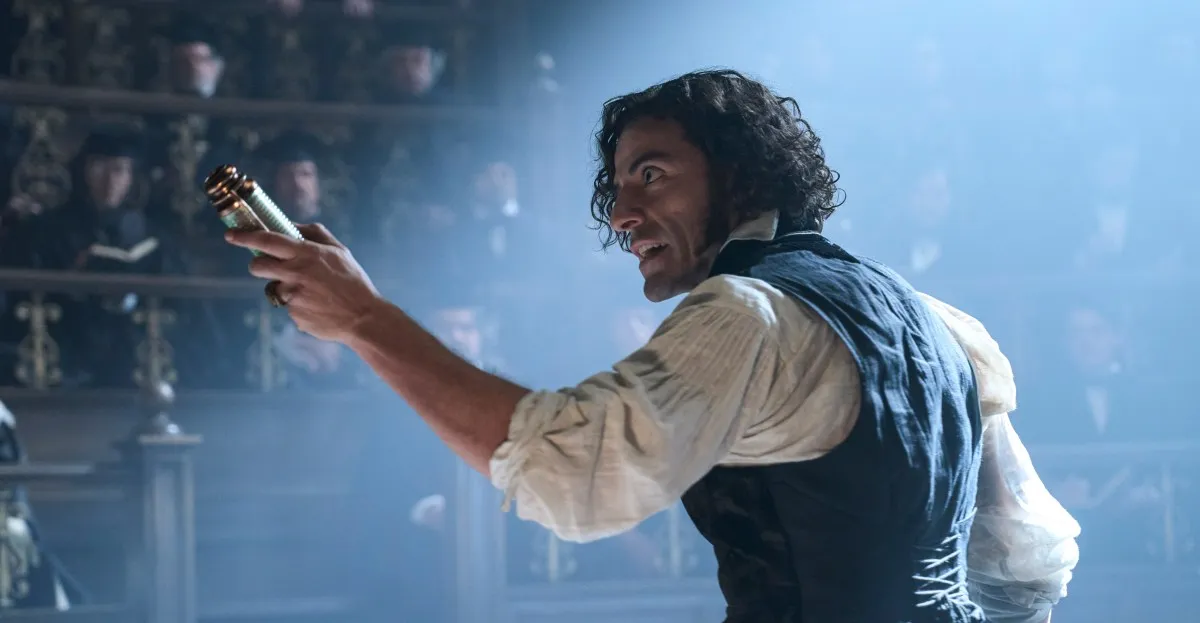
Renowned filmmaker Guillermo del Toro has been captivated by Mary Shelley’s iconic novel, Frankenstein, for as long as he can remember. Del Toro refers to the story as “the quintessential teenage book,” a sentiment that resonates deeply with audiences of all ages. His celebrated Bleak House in Los Angeles is a testament to this fascination, housing an impressive collection of the creature from various film and stage adaptations. The director has long envisioned creating his own cinematic interpretation of Frankenstein. “I dream I can make the greatest Frankenstein ever, but then if you make it, you’ve made it,” he remarked a decade ago, reflecting on the bittersweet reality of bringing dreams to life.
Del Toro’s adaptation of Frankenstein does not dramatically reinvent the classic monster myth; rather, it delves into the narrative through the lens of the director’s preoccupations. Themes such as finding beauty in darkness, the corruption of innocence, and the complex dynamics between parent and child are explored in depth. Del Toro masterfully infuses the film with his signature style and meticulous attention to detail, transforming a tale that has been around for over 200 years into something that feels uniquely his own.
The essence of the story remains intact, narrated from two contrasting viewpoints. The first perspective is that of Victor Frankenstein, portrayed by Oscar Isaac. Victor is depicted as an egomaniac obsessed with the ambition of conquering death. His theatrical demonstrations, which include reviving a ragged torso, evoke horror and discomfort among respected doctors and scientists. However, Victor's fortunes change when he encounters Harlander, a wealthy arms dealer played by Christoph Waltz, who agrees to fund his reanimation research.
One of the film’s strengths lies in its ability to illustrate Victor’s escalating mania. His childhood was marred by the death of his beloved mother, coupled with the emotional distance of a cold father who drilled medical sciences into him. This tumultuous background fosters an unrelenting desire to resurrect the dead. With Harlander’s financial support, Victor isolates himself in a remote laboratory, meticulously searching through morgues and battlefields for the necessary body parts. This gritty detail in the creation process grounds the otherwise fantastical narrative, making the eventual act of creation feel truly miraculous.
Victor’s creature is described as unusually tall, a choice made for practical reasons, as it allows for easier handling of larger body parts. The anticipation builds as the audience observes the painstaking effort Victor invests in his work. When Victor finally flips the switch, and the stitched-together man, played by Jacob Elordi, comes to life, the moment is both exhilarating and tragic. However, the narrative swiftly shifts as the creature opens his eyes, leading to unforeseen consequences. Victor’s initial awe quickly transforms into regret as he laments, “He never considered what would come after creation.”
As the story progresses, Victor’s relationship with the creature becomes increasingly complex. Although there are fleeting moments where Victor exhibits paternal instincts, he ultimately keeps the creature confined to a basement. The creature, possessing immense strength and healing abilities, resembles a gothic version of Wolverine, yet struggles with a slow-developing mind. His only utterance for a long time is “Victor,” which frustrates Victor immensely. Eventually, Victor’s regret leads him to destroy his laboratory in a desperate attempt to eradicate his creation, casting the creature into a harsh world.
From this point on, the story unfolds from the creature’s perspective. Despite his gentle nature, the creature faces abandonment due to his terrifying appearance. One of his few sources of solace is Elizabeth, Victor's sister-in-law, portrayed by Mia Goth, who sees him as a person rather than a monster. However, the creature's inability to escape his grim reality due to his healing powers drives him to seek revenge on Victor.
While the foundational elements of the Frankenstein story remain consistent with previous interpretations, del Toro’s take elevates the narrative through its powerful exploration of parental themes. Victor is portrayed as a negligent father, more concerned with the validation of his scientific endeavors than the well-being of his creation. When the creature fails to meet his expectations, Victor casts him aside, leaving the creature to grapple with his own suffering and search for meaning in a cruel world.
The emotional journey of the creature, portrayed by Elordi, is particularly compelling. Starting as a towering, doe-eyed figure, he gradually transforms into a tragic beast. Elordi's performance captures this evolution beautifully, showcasing a character that is both terrifying and deeply relatable. The creature’s appearance is unlike any previous iteration, featuring a pale visage adorned with geometrical scars that blend the plausible with the fantastical.
Every aspect of the film is meticulously crafted to enhance its themes. Isaac's charisma makes him a compelling Victor, while Elordi’s portrayal of the creature evokes empathy, navigating the fine line between monstrosity and humanity. The stunning set design, intricate costumes, and haunting dream imagery that del Toro is known for contribute to the film’s immersive experience. Even the coffins are visually striking, a testament to the director’s dedication to aesthetics.
Although it has taken years to bring this vision to fruition, the effort is evident in every frame of Frankenstein. Much like the man-made monster at the center of the story, the film intricately weaves together familiar elements to create something that feels both alive and fresh. Frankenstein is set to hit select theaters on October 17th, followed by its streaming debut on Netflix on November 7th, inviting audiences to experience this captivating reimagining of a timeless tale.